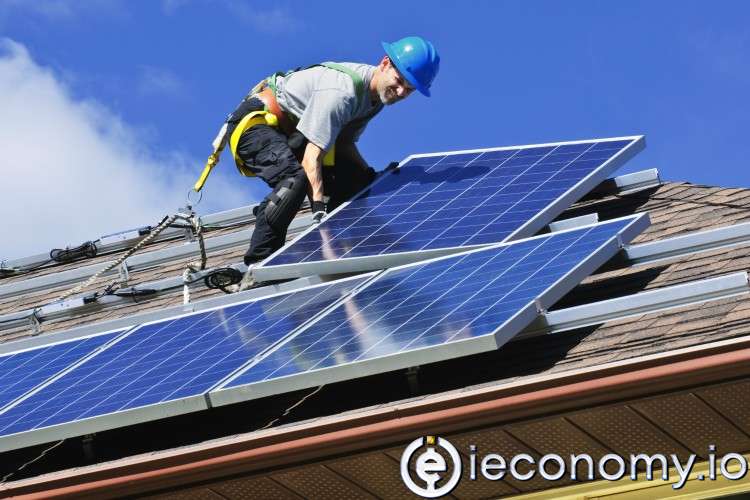2222
0
Record amount of solar panels on roofs in China
China has increased its roof solar panel capacity to 108 gigawatts, making it the country with the largest capacity...

Yazar: James Gordon
Yayınlanma: 21 Ocak 2022 01:25
Güncellenme: 4 Aralık 2025 09:10
In China, which installed a record number of solar panels on roofs last year, the growth in solar panels used on roofs has surpassed solar farms.
According to the statements made by the National Energy Administration, more than half of the 51 gigawatt (GW) solar panels produced in 2021 were used on roofs.
In the statement of the institution, it was noted that China, which has reached 108 GW by adding 29 GW to roof electricity production in 2021, has now become the country with the highest roof electricity production in the world. While most of this capacity is produced in the fourth quarter of the year, it is stated that the reason for this is the producers trying to take advantage of the subsidies that will end.
However, large-scale deployments have been hampered by high costs and project delays. Earlier last year, before China's main industry was revised downwards, its forecasts calculated that the capacity to be added in 2021 could reach up to 65 GW.
Still, the industry predicts 75 GW of capacity will be added in 2022, breaking its previous record. This goal will be supported by government incentives for giant clean energy centers and residential roof panels to be built in the interior of the country.
Although the incentives for solar panels are beginning to decrease, it is thought that new solar additions will continue in the city. Allowing local authorities to cut costs by purchasing in large numbers has increased interest in many cities and towns in purchasing panels.
By the end of 2023, participants in the pilot program will have the right to install panels in 50 percent of available areas of government buildings, 40 percent of schools and hospitals, 30 percent of industrial buildings, and 20 percent of rural homes.
Shandong, one of the cities showing the greatest interest in roof panels, has added 12 GW to its capacity in the past two years. Thanks to this, the city's capacity has increased so much that it is stated that the authorities are considering reducing the electricity supply during holiday periods when demand is low, such as the Lunar New Year.
İLGİLİ HABERLER





European stocks soared and focus shifted to German retail sales after Powell's speech!

Forex Signal For TRY/USD: Inflation Slowdown in November.

Forex Signal For GBP/USD: Bullish Trend Still Not Breaking While Recovery Continues.

Forex Signal For EUR/USD: Starry US Data Points to Higher Fed Increases.

Forex Signal For BTC/USD: Downside Continues as Bitcoin Recovery Moves Less.
En Popüler Haberler
Yorum Yap
Yorumlar
Henüz yorum yapan yok! İlk yorumu siz yapın...